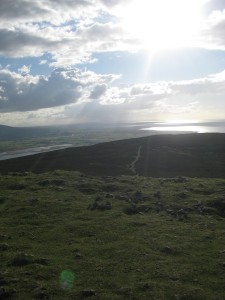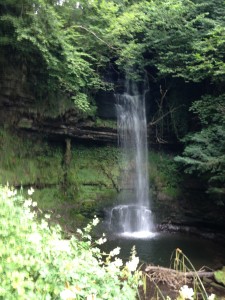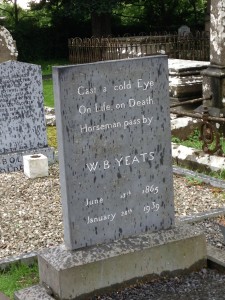Sligo – Pubs, Restaurants and Historical Sites
Strandhill Golf Club
Strandhill Golf Club was founded as a 9-hole course in 1931 and opened to the public in 1940. The 18-hole course present today opened in 1973. The clubhouse is considered one of the best in the West. Particularly memorable is the picturesque view from the course, as it is in sight of the beach and Knocknarea mountain.
Voya Seaweed Baths
Offering a variety of treatments, Voya Seaweed Baths is located in Strandhill. For more information or to book an appointment,

visit their website.
Knocknarea
A large hill near Sligo, 1,073 ft high with a large cairn at its summit. According to legend, it is good luck to carry a stone to the top of Knocknarea to leave on the cairn.
Carrowmore
One of four major megalithic complexes in Ireland, Carrowmore is the largest cemetery of megalithic tombs in Ireland and is also one of the oldest.
Innisfree

A small island in Lough Gill and featured in Yeats’s “The Lake Isle of Innisfree.”
Glencar Falls
A small, picturesque waterfall located near Glencar Lake and the foot of Ben Bulben. Located outside Sligo.
Ben Bulben
A large rock formation in Sligo and part of the Dartry Mountains. Mentioned in Yeats’s “Under Ben Bulben.”
Drumcliffe Church
Drumcliffe Church is best known for being the site of Yeats’s grave although, interestingly, not necessarily his final resting place.

The Cathedral of St. John the Baptist
Built in the mid 1700s, St. John the Baptist Cathedral is one of two cathedral churches in the diocese of Kilmore. In 1961, the name of the curch was changed to the Cathedral of St. Mary the Virgin and St. John Baptist.
Sligo Abbey
A ruined abbey that was originall built in 1253 and destroyed in 1414 by a fire and ravaged in 1595 and 1641. Lord Palmerston restored the abbey in the 1850s and it is currently open to the public, offering both guided and self guided tours.
Famine Memorial
Constructed at Sligo Harbor in 1997, the statue and plaque were commissioned by the Sligo Famine Commemoration Committee to mark the 150yh anniversary of “Black ’47.”
Gilhooly Hall
Standing across the road from the Cathedral of the Immaculate Conception, Gilhooly Hall was built to commemorate Laurence Gilhooly, Bishop of Elphin, who campaigned against alcohol.
The Hazel Wood
Located on the shores of Lough Gill two miles outside the town of Sligo and the setting of Yeats’s “The Song of Wandering Aengus,” the Hazel Wood is home to the Hazelwood House.